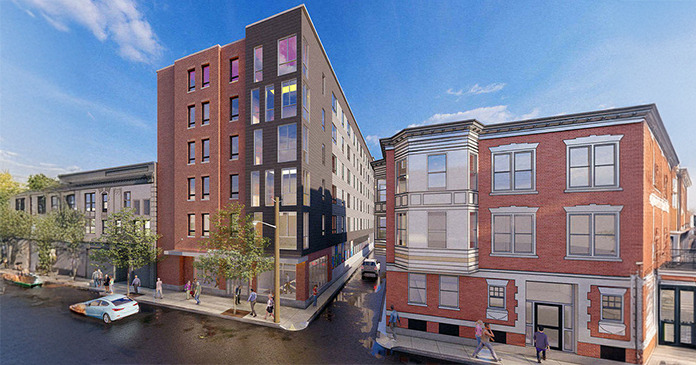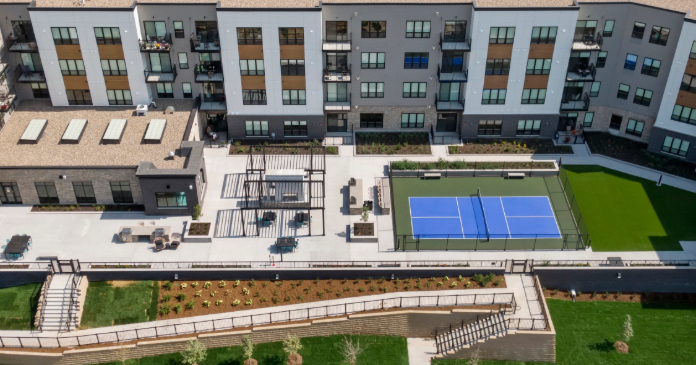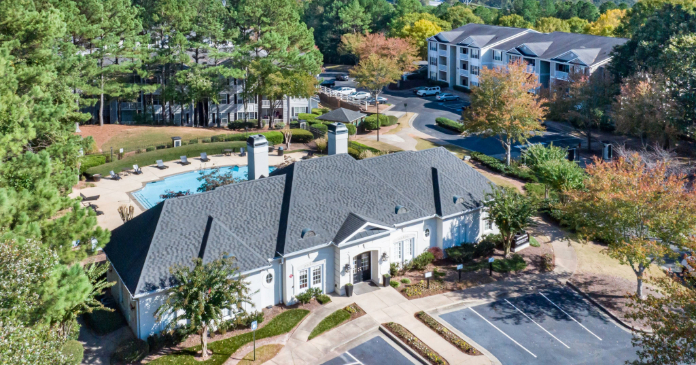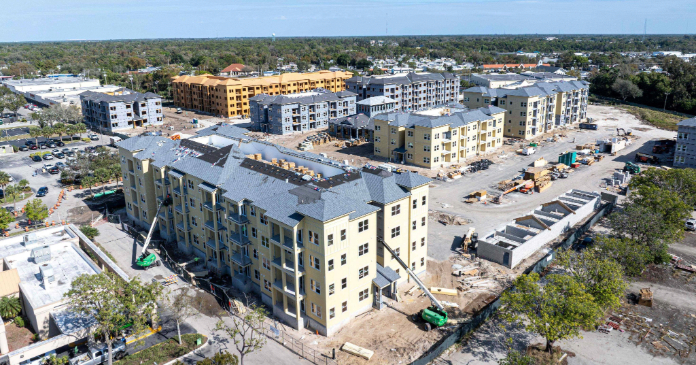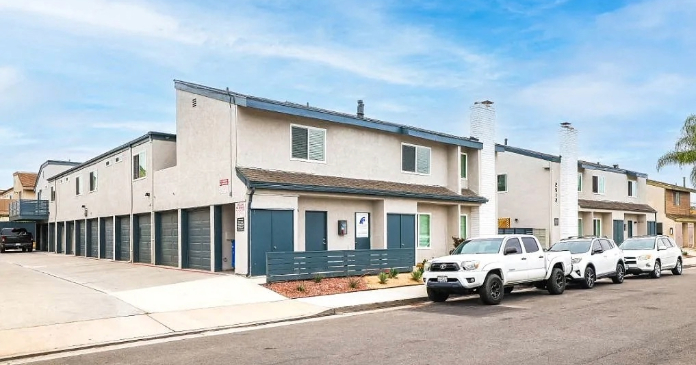Yield PRO TV presents NAHB Power Hitters. Host Linda Hoffman talks with Robert Dietz, SVP & Chief Economist, NAHB.
Transcript: NAHB Power Hitters interview. Linda Hoffman with Robert Dietz, SVP & Chief Economist, NAHB, recorded January 6, 2022
(music)
Linda Hoffman: It’s the elephant in the room… and for once, it’s not COVID. It’s inflation. How did we get to 40-year high inflation? Some blame supply chain issues, labor shortages, yeah, even climate change, for rising prices… There is also Federal Reserve policy leading to massive growth in the money supply and Washington engaging in huge levels of deficit spending.
People are noticing that all is not well. Three quarters of American voters gave a big thumbs down to the nation’s economy in a CNBC survey two days ago. After a year filled with economic surprises, and with the global financial crisis still a recent memory, people are wondering what lies ahead and how it will affect the business of supplying housing to the Nation.
In times like these, we need a guide who can see through the fog of conflicting data to identify what’s real. And that brings us to today’s guest, Robert Dietz, holder of a PhD in economics from the Ohio State University, chief economist at NAHB and long-time economy watcher. Robert, thank you for joining us today.
Robert Dietz: Well, thank you. It’s good to join you today.
Linda Hoffman: Since we spoke last April, inflation at the consumer level has really taken off. Forecasters from the Federal Reserve and Fannie Mae have repeatedly revised their forecasts higher, and extended the horizon of time for which they expect inflation to remain elevated. Looking back, what did the forecasters miss that led to this surge in inflation?
Robert Dietz: Yeah, I think most forecasters, even the really dovish ones, expected some increase in inflation. I think what’s changed is the idea of how long this is going to last. So, the Federal Reserve has retired the term, “transitory,” meaning that these inflation pressures are going to go away quickly. I think if you asked them to kind of go back and justify their forecast, they would say, well, transitory doesn’t mean a few weeks, or a few months, it means, maybe, a year or more. And actually, that’s the way we looked at it in terms of the NAHB forecast. We expect higher levels of inflation in 22 and 23.
But to get to your question, what was missed, well, I think it’s supply and demand, right? On the demand side, the impact of just a huge amount of stimulus in the economy, including things like suspending student loan payments, meant that a lot of households had a lot of cash to deploy. And they weren’t spending it as much on the service economy, because we were traveling as much and undertaking of service activities. So, a lot of it really was channeled into the goods economy.
In fact, if you look at the data, the goods economy since the COVID crisis started, was up more than 20 percent. And that’s a really dramatic increase, and it means that all those commodities used to produce those goods are more expensive. On the supply side, the supply chain effects are real. And, unfortunately, they’re persistent. So, whether it’s diminished trade from the Pacific Rim where we get a lot of building materials, or even homegrown challenges like the lumber sector where we are simply still not producing enough domestic lumber to build single-family homes and apartments and undertake remodeling projects.
And we even got some bad news on lumber side when the Biden administration announced they were going to double those lumbar tariffs. So, there’s some of those supply chain issues that are self-inflicted through bad policy, like tariffs, which are just taxes on building, and some of them are challenges that we’re going to have to work our way out of—like the labor shortage and trying to get the transportation network up to speed.
Linda Hoffman: The most recent PPI report stated that the price index of components and materials for construction was up 21 percent year-over-year, as you were just talking about. Lumber and metal prices were up even more. Is there any relief ahead?
Robert Dietz: Some. But the expectation that we’re somehow going to get a reset and those prices are going to go back to the norms of 2019—it is not in any reasonable forecast. So, I think what we can expect in 2022 is that the growth rates—the 21 percent that you mentioned that’s in the PPI—those growth rates are to come down. So, when we talk about easing, what we’re talking about is, prices will continue to rise, but the rate of growth will diminish.
And that will be good news, but ultimately at the end of the day, it does mean that the cost of just about everything—land, labor, lumber, and materials—all those factors that go into building housing will continue to rise. And then what’s that mean down the road? It means higher rents, and it does mean higher home prices in the new construction sector. And those, eventually, and it takes a little bit of time, those eventually land in the consumer inflation data, in the CPI, and rents a good example of that, by the way. Rents enter into the CPI when a lease is renewed or established. So, that can be 12 months after the actual market price of rent has gone up.
So, if you’re expecting a quick end to some of these inflation pressures, just the way the data are constructed means that we will have lagging effects pushing up inflation at least for the next 12 to 18 months.
Linda Hoffman: The Fed has signaled that they will advance the tapering of their asset purchases and will raise interest rates as much as 3 times next year, Rob. However, given current levels of inflation, real interest rates will remain strongly negative. How do you expect the Fed’s anticipated move to affect the commercial and residential real estate business?
Robert Dietz: Well, without a doubt, the financial markets are to be tightening. It’s going to become more expensive to buy home. It’s going to be more expensive to borrow money to develop real estate, construct real estate. And just thinking about our outlook on the Fed, we had previously been saying, say, six months ago we thought the Fed would raise rates twice in 2022. Well, as you indicated, like other forecasters, we have moved to saying the Fed will raise rates three times next year, likely three times in 2023.
And so, when you add all that together, that’s 150 basis points to the fed funds rate. Now, it’s not one for one, but that is going to push up the 10-year treasury rate, and that treasury rate helps set the cost of borrowing for business activity, as well as mortgages. So, if you think about in terms of the rent-buy decision, which of course is clearly important in the multifamily space, that spans commercial and residential development, housing affordability is going to go down in 2022. And it’s going to have the biggest impact on those high loan-to-value buyers.
The younger prospective, first-time buyer who sees home prices have gone up 20 to 30 percent over the last 18 months, and now interest rates are rising, as well. Rates right now, at the start of 2022 are at 3.2 percent mortgage rate. We think by the end of the year, they’ll be at 3.9 or 4 percent. So, there’s going to be this kind of push and pull within the housing market.
And then within commercial real estate, we’re already beginning to see rebounds in multifamily that is going to continue. In nonresidential construction, that will continue to improve. But the cost of capital to builders is going to go up in 2022 due to those inflation factors.
Linda Hoffman: Apartment occupancy has been very strong, with vacancy rates in many areas falling below pre-pandemic levels. From where did all of these additional renters come?
Robert Dietz: That’s a great question now. Some of it is COVID, and some of it is data measurement type issues. But I think one of the things that we saw in the middle of 2020, when the uncertainty was the greatest regarding the virus, was a lot of young adults did not move out of their homes. You know, there’s a lot of discussion about people moving in and out of cities, but a lot of the demographics are just simply young people choosing to live with her parents.
So, where to these household come from? Well, they’re coming from their parents’ homes. And they are charging and increasing the demand for rental apartments, and one of the good news stories, I think was underreported during the second half of 2021, was this kind of rollback of housing demand into medium-density type markets. We know in 2020 a lot of low-density markets did well, in terms of housing demand. But, there was—not everywhere—but in much of the country, starting coming to grips with the virus, coming to a new normal.
And that means a return to some of these higher density markets, where job creation occurs.
Linda Hoffman: Not soon enough. To what extent have eviction moratoriums contributed to high occupancy rates? And, once the eviction machinery gets going again, will occupancy be impacted?
Robert Dietz: So, I’ve been kind of a skeptic on some of the worst-case scenarios on evictions, and I would add foreclosures on this. We saw some scary projections if you go back to the middle of 2020—what was going to happen to evictions and foreclosures due to this economic crisis. A lot of them, and this is kind of more technical, but a lot of them are coming about due to a new census project called the Census Pulse Survey, where it was self-reported. They’d go out and interview households, and say, “Are you able to pay your mortgage” “Are you able to pay your rent?” And it wasn’t even binary—yes, no—it was, “Are you having trouble paying those things?”
Well, you know, most households that are middle-class, and that’s most the country, will say, “Oh sure, it’s a challenge to pay your bills any month, right? You got to plan on all those things.
But the result was that the people that wanted to make the scariest case on things like evictions, and foreclosures, took that data and said, “huge numbers of people having trouble paying their rent, therefore, we expect 10 million evictions once the moratorium go away. Well, that’s not what we’re seeing at all. In fact, I think the most reasonable economists said that we would see an uptick, but nothing like this kind of tidal wave of people moving, or higher occupancy rates and the likes.
So, our expectation is we’ll see some upticks, but I think occupancy rates are really being kept low right now, due to the most fundamental characteristic of the housing market, which is lack of inventory for just about every kind of housing.
Linda Hoffman: One, possibly unexpected, effect of the pandemic and the response to it was that the household savings surged. To what extent is this accumulation of savings being used to increase the number of people living independently? And will these newly formed households disappear once the accumulated savings are exhausted?
Robert Dietz: Yes, I don’t think those households will disappear, but that growth rate is going to diminish. It goes back to what we were talking about before, you know. It’s the changes of the growth rates, themselves, that we’re going to see in 2022. So, that kind of surge in the growth of households is going to end. Yeah. I mean if you look at household finances, household balance sheets during this downturn—the downturn in 2020—and then the recovery in 2021, household balance sheets improved. That almost never happens in recessions.
Now, the reason for it, and there’s no free lunch, the reason for it—huge amounts of stimulus, and of course, the cost of all that stimulus, bigger government deficits, and, then, higher inflation. So, savings went up, but inflation means that those savings are worth less. Now, in the short run, it has had a positive impact on housing demand. The increase in savings allowed some prospective homebuyers to accumulate the money necessary to purchase a home, and it is driving up rents right now. So, it’s had a positive impact, in the short run, on the housing market.
The concern is that free lunch item, that the fact that in the long run it means inflation pressures are going to increase, and we’re going to see that on the cost side within residential and commercial real estate development.
Linda Hoffman: The pandemic was said to have caused people to flee the cities. When are they going back?
Robert Dietz: Well, so, this is one of those issues that I sort of feel very personally vested in because we did a lot of research back in spring of 2020. And we said we saw in the construction permit data of single-family and multifamily, a real noticeable suburban shift, and where those permits were being undertaken.
So, yeah, exurbs, medium density cities and their suburbs saw growths. Much stronger growth rates, in terms of single-family construction and multifamily construction. As I said before, though, in 2021, some of that demand have rolled back in. In fact, the differences in the growth rates between, say, the inner suburbs and the outer suburbs, is just about equal right now. The numbers—that difference has gone away. And a good example of that, by the way, good news for kind of medium density areas, is second quarter 2021, we had the best quarter for townhouse construction in 14 years.
So, that demand has rolled back. The final point about this was, it wasn’t as much people fleeing the cities, although there were good examples of that in places like New York—particularly younger households that, maybe, moved into their parents’ home and in some limited cases, maybe the beach house. But really, what happened was, you had fewer people leaving their markets to go to those metro markets. It was the inflow that was reduced, rather than the outflow being increased.
But I think if you look at the construction data, the construction data is a great leading indicator of where populations are going. Right now, we’re seeing a more equalization of growth in homebuilding across markets—still a little bit of a slight edge on those exurbs, but that’s a natural consequence of the fact that land is cheaper, and the regulatory burdens are lower. And, so, those are better places to build if you’re a multifamily developer, or single-family home builder.
Linda Hoffman: California was a prime example of that. It’s actually the inflows that are causing the problem.
Robert Dietz: That’s right.
Linda Hoffman: Or lack, thereof.
Robert Dietz: Right. Well put.
Linda Hoffman: One of the solutions being proposed for increased housing affordability is to eliminate single-family-only zoning. Is there any evidence that this approach is working in jurisdictions, like Minneapolis, that have tried it?
Robert Dietz: Yeah. So, the question here is, can we count theory as evidence? Well, in the economics world, we can. In the real world, we can’t.
In theory, yes, these kinds of zoning changes should allow for increased homebuilding in these markets. The problem is, in the places where the increase in density allowed to where, previously, you could only build single-family homes. It’s places like Minneapolis, places in Oregon, and a lot of those places over the last year-and-a-half have challenges in governance trust. And, so, on the plus side, you have a theoretical change in zoning that should help increase housing demand, increase housing supply, and make those markets work more efficiently.
But then on the other side of ledger, you have residents, existing citizens, prospective renters, looking at this market and saying, “Hm, I’m not so sure about the governance, and those issues because of police, and schools and the like.” So, they’ve offset, and so we don’t have a lot of good evidence. I would say, though, in the long run, building with density, whether it’s single-family housing or multifamily construction, is a way that we can build more homes, in general.
So, in the long run, it’s going to have an impact. In the short run, I don’t think we have enough evidence to really kind of make a clear case that it’s helped, thus far.
Linda Hoffman. Well, what a great show. Another one. Thanks for joining us, Rob.
Robert Dietz: Great. Thank you. It’s great to join you again.
Linda Hoffman: It might seem that economic forecasting is not settled science. We failed to anticipate the Great Recession of 08. Inflation accelerating to a 40 year high in 2021. Who knows what 2022 holds? Assets prices. Credit market bubbles. Economic recessions. Oh my. All as the world economy is projected to reach $100 trillion this year—instead of 2024—according to the London-based Center of Economics and Business Research. There’s a lot to watch and you can be assured Yield Pro will bring you the story. Thank you for joining us. I’m Linda Hoffman. Look for our next exciting episode of NAHB Power Hitters.
(music, credits)



